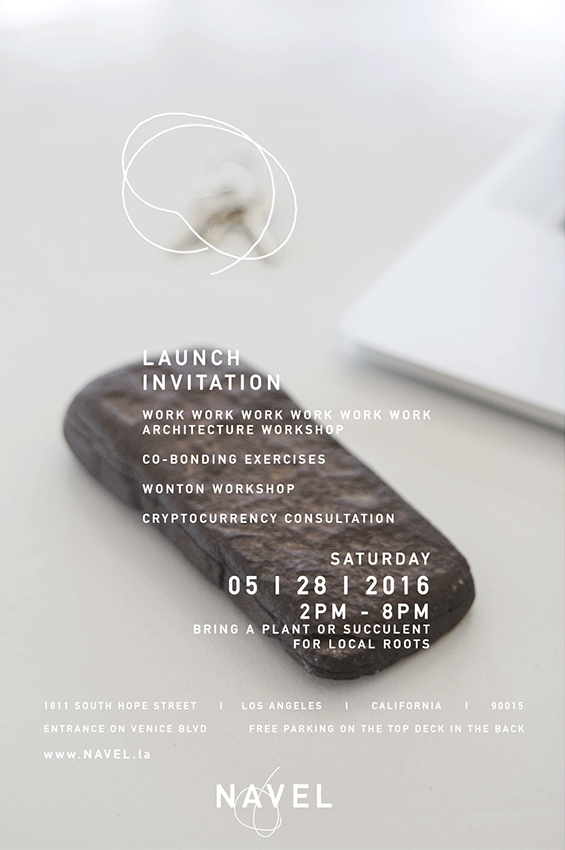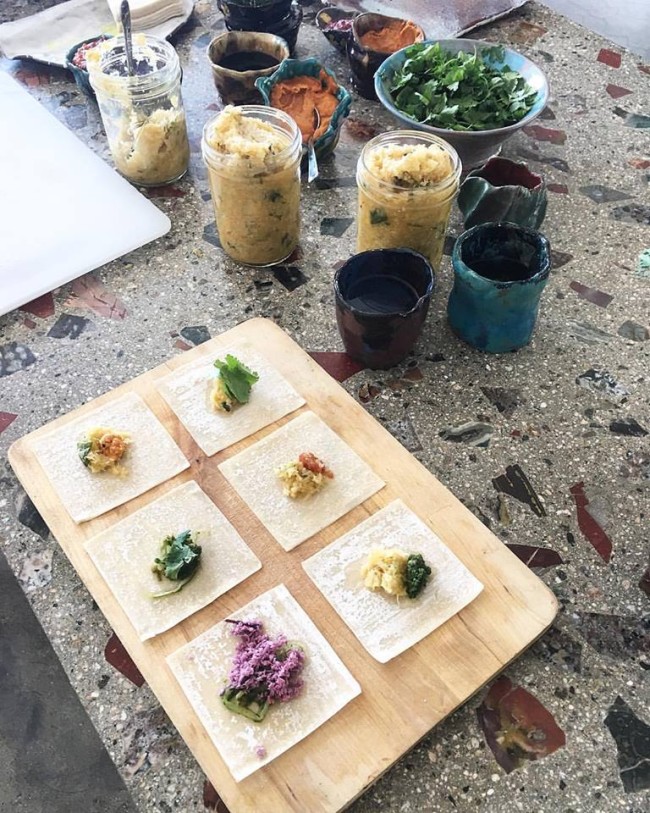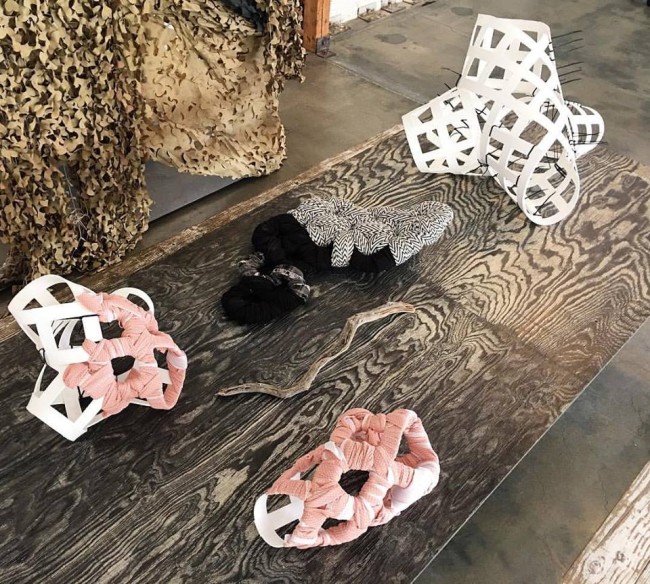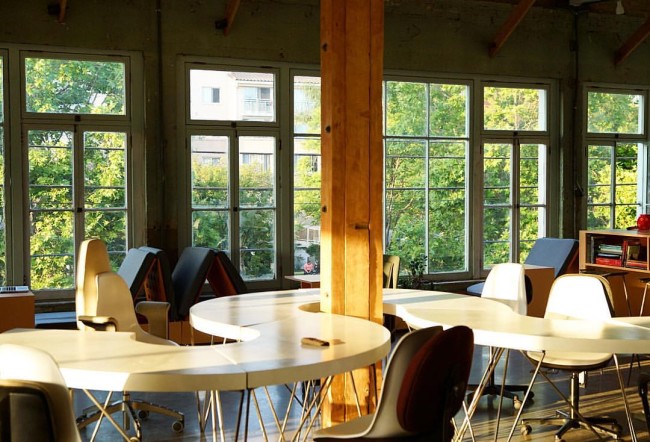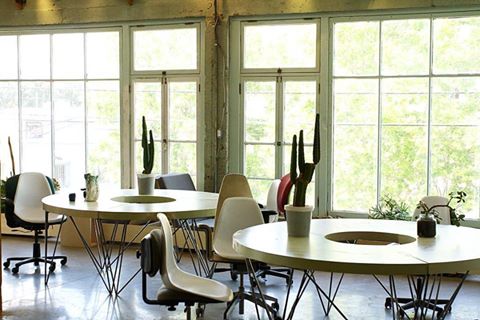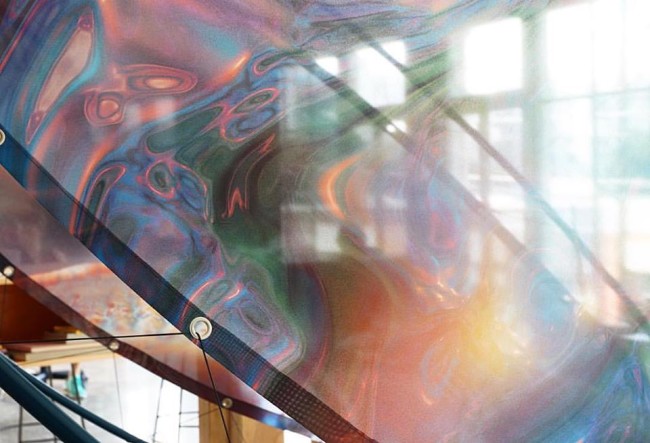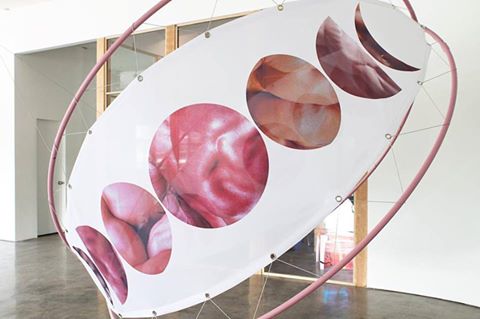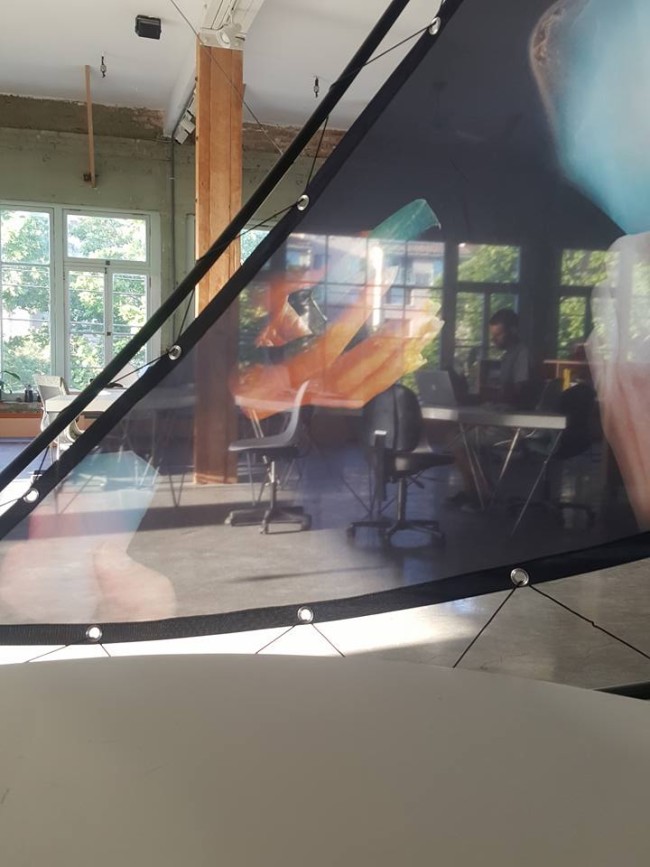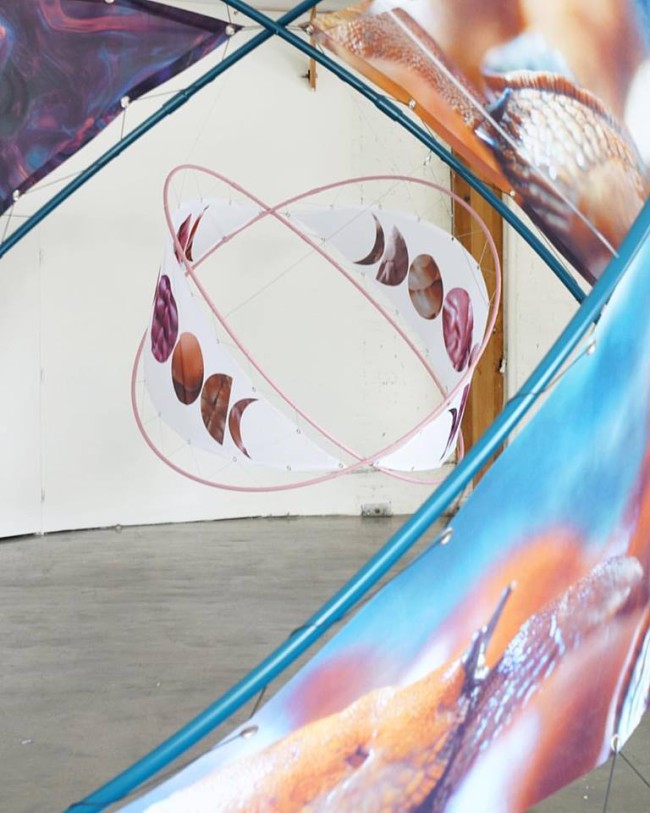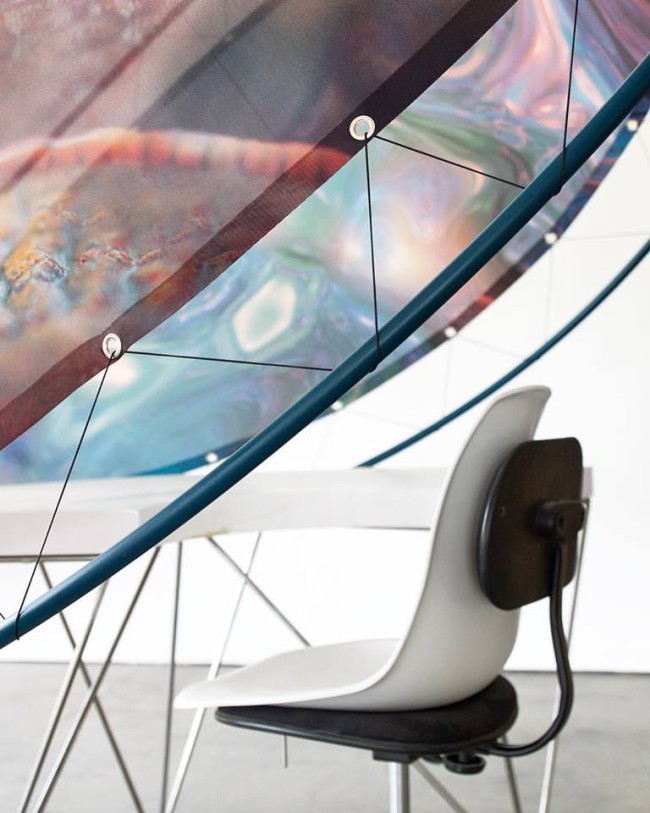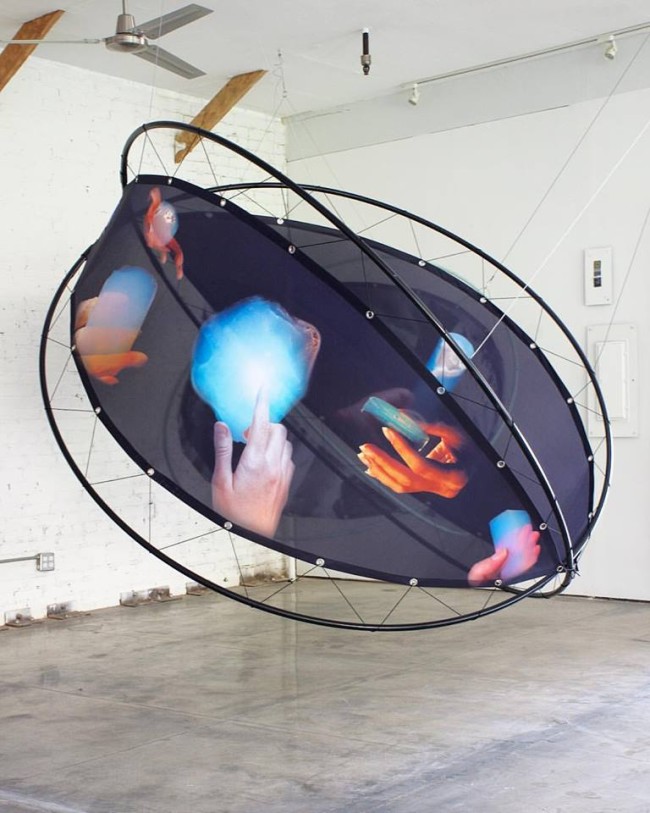28. Mai - 31. Juli 2016
/ Nows
⟶
Stian Korntved Ruud & AE: Ludological, 2016
NOWs:
Hybrid Modus documents how traditional concepts of sculpture are being challenged and expanded to their outer boundaries, and how sculpture merges into other disciplines. New, contemporary definitions are questioned, adapted and proved.
Hybrid Modus is a group show that brings together artists, who’s works deal with the paradigm shift that has taken place on the level of ecological, societal and technological issues, leading to a post-human environment. The exhibition addresses the issue of a man-made, hybrid ecology where nature, culture, capital, and the circulation of information coexist and overlap within the web of life. It may be related to our physical space, natural or urban surroundings, to virtual worlds. How do we deal with and live in these different realities? From the perspective of the human environment being in such a state of flux, the exhibition focuses on the significance of sculpture in the context of today’s networked society. How does the sometimes seemingly anachronistic, traditional medium address this current development?
Artists: Lara Almarcegui, Isabelle Andriessen, Julian Charrière, Andreas Greiner, Spiros Hadjidjanos, Martijn Hendriks, Markus Hoffmann, Rachel de Joode, Sculptress Of Sound, Stian Korntved Ruud & AE, Philip Topolovac, Mirko Tschauner, Alvaro Urbano, Benjamin Verhoeven, Raul Walch, Dan Walwin.
Hybrid Modus is the 2016 edition of Skulptur Bredelar, and is curated by Bas Hendrikx and Ursula Ströbele.
Hybrid Modus : Skulptur Bredar, installation view
Markus Hoffmann: Memory, 2014
Markus Hoffmann: Memory (detail), 2014
Markus Hoffmann: As a tribute to the wealth of natural patterns and systems, Memory consists of twelve glass-topped cabinets, each containing segmented discs of trees taken from all over the world. These specimens were artificially exposed to the growth of fungi for a certain period of time, before the discs were fossilised in their containers. Resulting in a fossil mosaic, Memory is an archived global forest for generations to come.
Julian Charrière:
Future Fossil Spaces, 2016
Julian Charrière: Future Fossil Spaces is a space-consuming sculpture made from blocks of salt, complementary plaster elements and enamelled basins filled with a lithium-rich saline solution, the materials reference where they are from, the South American “lithium triangle” (Argentina, Bolivia, Chile). The one hundred million year-old salt is mined there in order to process it for producing lithium salt solutions used in the rechargeable batteries of our digitised world. Past and present collide in the geological time required to make the salt and its modern use.
Andreas Greiner: Dreamcatcher, 2014
Andreas Greiner: Dreamcatcher (detail), 2014
Andreas Greiner: A pendulum on a canopy bed is in random motion and transfers this movement to a conical flask containing bioluminescent bacteria suspended in seawater, which react by glowing. In the wild, these bacteria live symbiotically within the organs on the underbellies of night-hunting squid which use this disguise to convince their prey that they are a part of the night sky glimmering above them.
Stian Korntved Ruud & AE: Ludological, 2016
Stian Korntved Ruud & AE: Visually referencing deep-sea data infrastructures, Ludological is a device in which algorithms compete with each other. Hyper-optimization and advanced efficiency protocols in industry 4.0 have led to a detachment of ecology and its actors. Ludological subjects a tree trunk to the outcomes of a game between two scripts. The tree is distorted with each gain or loss of its host, ultimately and inevitably leading to its destruction.
Alvaro Urbano: The Ghost & The Host, 2014, installations & film HD, 8. 29 looped
Alvaro Urbano: The short, The Ghost & The Host was filmed on location in the garden of the Villa Romana in Florence. The fictive story unfolds in the traces of this historic garden‘s past, its sculptural decor and its inconspicuous inhabitants (insects, fish, and cats) which awaken to life in the mysterious moonlight. Even the statues move ghost-like through the plumes of fog and explore the place. Is it an animistic dream, or a reference to post-humanism, or a glimpse into a surrealist fantasy world?
Raul Walch: Five, 2016
Raul Walch: Five, 2016
Raul Walch: Five flags, moving in the wind in front of the former monastery, show abstract color patterns, that are neither related to a certain group nor territory, but instead, they represent brush strokes: a hybrid of painting on canvas or a sculpture, similar to the fluttering clothes on a line that Man Ray called Sculpture mouvante in the 1920s? Exposed to the elements, the surface changes thoughout the exhibition.
–
Photos: Sander van Wettum; copyright and courtesy of the artists and Skulptur Bredelar
Stian Korntved Ruud & AE: Ludological, 2016
NOWs:
Hybrid Modus zeigt, wie traditionelle Konzepte von Bildhauerei angefochten und bis aufs Äußerste gedehnt werden, wie Skulptur heute mit anderen Disziplinen und Fachbereichen verschmilzt. Neue zeitgenössische Definitionen werden befragt und erprobt.
Hybrid Modus ist eine Gruppenausstellung, die Künstler aus Deutschland, Belgien und den Niederlanden vereint. Ihre Arbeiten beschäftigen sich mit dem Paradigmenwechsel, der auf ökologischer, gesellschaftlicher und technologischer Ebene stattfindet und zu einer ‚post-humanen‘ Umwelt führt.
Die Ausstellung behandelt den Themenkomplex einer künstlichen, hybriden Ökologie, in der Natur, Kultur, Kapital und das ständige Zirkulieren von Informationen nebeneinander bestehen und sich im Netz des (digitalen) Lebens überlagern. Dies betrifft unseren physischen Raum, natürliche oder urbane Umgebungen bis hin zu virtuellen Welten. Wie gehen wir mit diesen verschiedenen Realitäten um und wie leben wir in ihnen? Aus der Perspektive einer sich derartig im Fluss befindenden und in Veränderung begriffenen menschlichen Umwelt beleuchtet die Ausstellung die Bedeutung von Skulptur im Kontext der heutigen Netzgesellschaft. Wie reagiert dieses teils anachronistische, traditionelle künstlerische Medium auf die gegenwärtigen Entwicklungen?
Künstler: Lara Almarcegui, Isabelle Andriessen, Julian Charrière, Andreas Greiner, Spiros Hadjidjanos, Martijn Hendriks, Markus Hoffmann, Rachel de Joode, Sculptress Of Sound, Stian Korntved Ruud & AE, Philip Topolovac, Mirko Tschauner, Alvaro Urbano, Benjamin Verhoeven, Raul Walch, Dan Walwin.
Hybrid Modus ist die 2016 Edition von Skulptur Bredelar. Die Ausstellung wird von Bas Hendrikx und Ursula Ströbele kuratiert.
Hybrid Modus : Skulptur Bredar, Installationsansicht
Markus Hoffmann: Memory, 2014
Markus Hoffmann: Memory (Detail), 2014
Markus Hoffmann: Als Hommage an den Reichtum und die Vielfalt natürlicher Muster und Systeme besteht Memory aus zwölf mit Glasplatten bedeckten Kästen, die Baumscheiben aus aller Welt enthalten. Bevor die Scheiben zum Zweck der Versteinerung in ihre Behälter gelegt wurden, setzte der Künstler diese Baumproben über einen längeren Zeitraum einem künstlichem Pilzbewuchs aus. Als ein fossiles Mosaik stellt Memory nun einen archivierten globalen Wald für zukünftige Generationen dar.
Julian Charrière:
Future Fossil Spaces, 2016
Julian Charrière: Future Fossil Spaces ist eine raumgreifende Skulptur aus Salzblöcken, komplementierenden Gipselementen und mit Lithiumsole gefüllten Emaillebecken, deren Material auf den Herkunftsort, das südamerikanische „Lithium-Dreieck“ (Argentinien, Bolivien, Chile) verweist. Das hunderte Millionen Jahre alte Salz wird dort abgebaut, um daraus Lithiumsole für die Akkubatterien unserer digitalisierten Welt zu gewinnen. Vergangenheit und Zukunft prallen in der geologischen Zeit und heutigen Nutzung aufeinander.
Andreas Greiner: Dreamcatcher, 2014
Andreas Greiner: Dreamcatcher (detail), 2014
Andreas Greiner: Ein Pendel an einem Baldachinbett evoziert eine chaotische Bewegung und überträgt diese auf einen Erlenmeyerkolben mit biolumineszierenden Bakterien in Meerwasser, die darauf mit einem Leuchten reagieren. In der Natur kommen diese in den Leuchtorganen auf der Körperunterseite nachts jagender Tintenfische vor, die so getarnt von ihrer Beute als Teil des über ihnen strahlenden Sternenhimmels wahrgenommen werden.
Stian Korntved Ruud & AE: Ludological, 2016
Stian Korntved Ruud & AE: Ludological ist eine Apparatur, die visuell Bezug auf Infrastrukturdaten aus der Tiefsee nimmt und in der sich Algorithmen miteinander messen. Hyper-Optimierung und hoch entwickelte Effizienzprotokolle in der Industrie 4.0 haben zu einer Entkopplung der Ökologie von ihren Akteuren geführt. Ludological macht einen Baumstamm zum Gegenstand der Ergebnisse eines Spiels zwischen zwei Skripten, die mit jedem Gewinn oder Verlust ihres ‚Hosts‘ weiter verfälscht werden, was letztendlich und unausweichlich zu dessen Zerstörung führt.
Alvaro Urbano: The Ghost & The Host, 2014, installations & film HD, 8. 29 looped
Alvaro Urbano: Drehort des Kurzfilms ist der Garten der Villa Romana in Florenz. Die fiktive Geschichte entwickelt sich auf den Spuren der Vergangenheit dieses historischen Gartens, seines skulpturalen Dekors und seiner teils unscheinbaren Bewohner (Insekten, Fische, Katzen) die im geheimnisvollen Mondschein zum Leben erwachen. Sogar die Statuen bewegen sich geisterhaft durch die Nebelschwaden und erkunden den Ort. Ein animistischer Traum, Verweis auf den Posthumanismus oder der Blick in eine surrealistische Fantasiewelt?
Raul Walch: Five, 2016
Raul Walch: Five, 2016
Raul Walch: Fünf, sich vor dem ehemaligen Kloster im Wind bewegende Flaggen weisen abstrakte Farbmuster auf, die weder auf eine bestimmte Gruppierung oder Territorium verweisen, sondern einen Pinselduktus erkennen lassen: ein Hybrid von Malerei auf Leinwand oder Skulptur, ähnlich den von Man Ray in den 1920ern als Sculpture mouvante bezeichneten flatternden Wäschestücken? Der Witterung ausgesetzt, verändert sich die Oberfläche im Laufe der Ausstellung.
–
Fotos: Sander van Wettum; Copyright und Courtesy: die Künstler und Skulptur Bredelar
